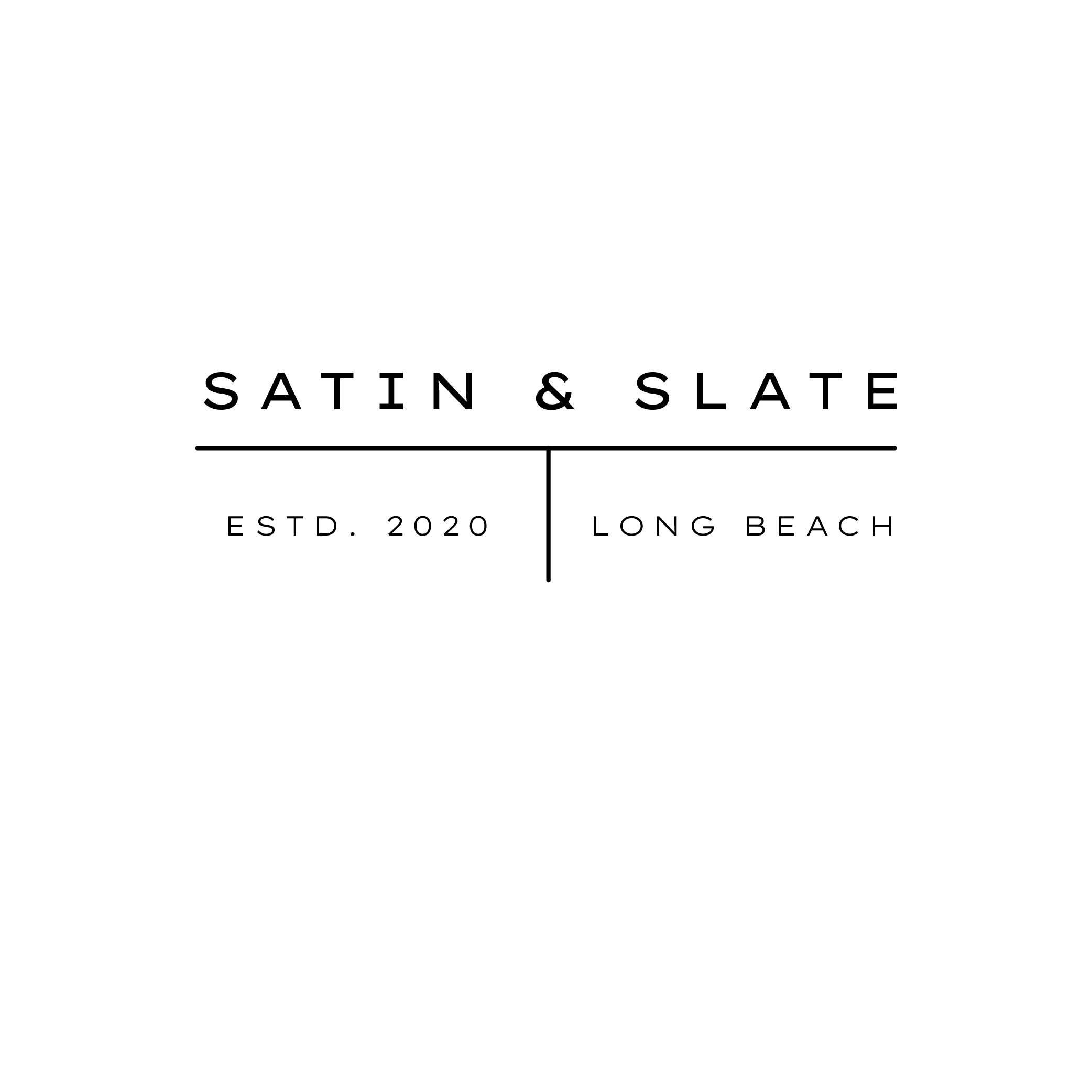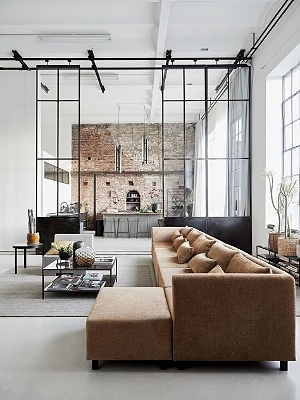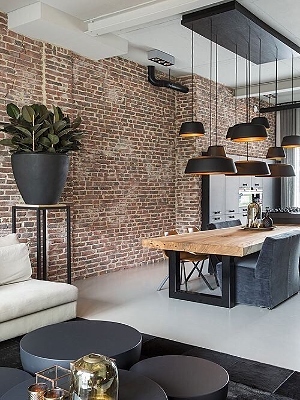Industrial interior design is a captivating and versatile style that pays homage to the past while embracing the present. With its roots in converted warehouses and factories, industrial interior design has evolved into a widely appreciated aesthetic for homes, offices, restaurants, and more.
In this comprehensive guide, we’ll delve deep into the world of industrial interior design, exploring its history, key elements, decorating tips, and how to incorporate this captivating style into your space.
History of Industrial Interior Design
The origins of industrial interior design start with the aesthetic’s namesake: the industrial revolution. With the rise of close-knit warehouses during the 1700s, the demand for efficient architecture inadvertently birthed a popular design movement that has persisted to this day. Also, the introduction of steel and concrete construction played a pivotal role in catapulting industrial-style designs and architecture into the spotlight. Besides, this design movement became particularly popular in the residential world during the 1960s and ’70s when old warehouses and factories were reimagined as living spaces, coinciding with the rise of loft-style living in large cities.
Today, the continued surge in adaptive reuse projects has solidified industrial design in our interior design lexicon as more than just a trend; it’s a continually evolving style. Giving these preexisting industrial buildings a second chance at functionality invites a unique allure to these tight, cold atmospheres, redefining our emotional connection to how we should occupy them.
Key Elements of Industrial Interior Design
1. Raw Materials
In industrial interior design, the focal point lies in the use of raw and unprocessed materials like steel, iron, concrete, and reclaimed wood. These elements bring an authentic and rugged aesthetic to the space. Also, the deliberate inclusion of these materials not only adds character to the interior but also creates an environment where the beauty of rawness and industrial charm coexist harmoniously.
2. Exposed Structural Elements
In industrial interior design, the unconventional approach of celebrating exposed structural elements like beams, ductwork, and pipes is a hallmark of the style. Rather than concealing these industrial features, they are purposefully integrated into the design, becoming not only functional but also aesthetic focal points of the space. This design choice not only emphasizes the authenticity of the industrial setting but also contributes to the overall character and uniqueness of the interior, forging a seamless connection between form and function.
3. Open Spaces
Industrial interior design frequently embraces open floor plans, prioritizing an environment that fosters interaction and fluid movement throughout the space. This design concept not only enhances the sense of spaciousness but also promotes collaboration and a sense of community within the interior. The absence of walls and barriers allows for versatility in layout and highlights the functionality of the space, making it well-suited for various uses and adaptability in the dynamic needs of modern living and working environments.
4. Neutral Color Palette
A neutral color palette consisting of shades like gray, black, white, and brown serves as the foundation of industrial interior design. These colors provide a versatile canvas that allows other design elements to take center stage. Also, these subdued hues create a sense of simplicity and understated elegance. And these enable the raw materials, exposed structures, and unique furnishings to shine with their own distinct character. This minimalist approach to color not only enhances the industrial aesthetic but also offers flexibility for personalization, as pops of vibrant or contrasting colors can be introduced through decor, artwork, and textiles to infuse individuality and warmth into the space.
5. Vintage and Repurposed Furniture
Incorporating vintage or repurposed furniture pieces, such as reclaimed wood tables and metal chairs, plays a pivotal role in industrial interior design by infusing authenticity and character into the decor. These well-worn furnishings bring a sense of history and nostalgia, serving as reminders of the past lives they once led. By blending seamlessly with the raw materials and exposed elements of industrial design, these pieces create a unique synergy that not only defines the space but also tells a story of craftsmanship and sustainability, elevating the overall aesthetic while contributing to a more environmentally conscious approach to interior design.
6. Minimalism
Industrial design places a strong emphasis on minimalistic decor, ensuring that raw materials and structural elements remain at the forefront of the interior’s visual narrative. This intentional simplicity creates a sense of spaciousness and clarity within the space, highlighting the inherent beauty of exposed beams, metal accents, and concrete surfaces. By embracing a less-is-more philosophy, industrial interiors not only achieve a clean and uncluttered aesthetic but also establish a unique balance between functionality and aesthetics, where every element serves a purpose while contributing to the overall visual impact of the design.
7. Industrial Lighting
Lighting is a crucial aspect of industrial interior design, and it frequently features fixtures with metal or iron elements and exposed bulbs. Pendant lights, wall sconces, and floor lamps are common choices in this style, echoing the raw and utilitarian aesthetic of industrial spaces. These fixtures not only provide functional illumination but also serve as decorative elements, adding to the overall industrial charm and helping to create a warm, inviting atmosphere within the space.
Decorating Tips for Industrial Interior Design
1. Start with the Basics
Begin by creating a neutral canvas with exposed brick walls, concrete floors, and neutral paint. These elements set the foundation for your industrial design.
2. Mix Materials
Don’t be afraid to mix materials like metal, wood, and leather in your decor. The contrast between these elements adds depth and visual interest to the space.
3. Incorporate Vintage Finds
Hunt for unique vintage or industrial pieces at thrift stores, flea markets, or online marketplaces. These one-of-a-kind items can become statement pieces in your design.
4. Embrace Open Shelving
Open shelving made from reclaimed wood and metal brackets not only provides practical storage but also showcases your decor and collectibles.
5. Use Textiles Thoughtfully
Soften the harshness of industrial materials with textiles like rugs, throw pillows, and curtains. Opt for materials like burlap, canvas, or leather to maintain the industrial vibe.
6. Showcase Industrial Art
Industrial art pieces, such as abstract metal sculptures or oversized wall clocks, can be excellent focal points in your design.
7. Pay Attention to Lighting
Choose industrial-style lighting fixtures that complement the space’s overall aesthetic. Edison bulbs and metal shades are popular choices.
Incorporating Industrial Design into Different Spaces
1. Industrial Home Decor
In your home, create an industrial vibe in the living room with leather sofas, metal coffee tables, and exposed brick walls. In the kitchen, open shelving, stainless steel appliances, and concrete countertops can enhance the industrial feel.
2. Industrial Office Spaces
Design an inspiring industrial workspace by incorporating steel desks, vintage filing cabinets, and exposed ceiling pipes. Opt for a mix of task lighting and pendant lights to illuminate the area.
3. Industrial Restaurants and Cafes
Industrial design can set a unique ambiance in eateries. Exposed brick walls, communal dining tables made from reclaimed wood, and industrial-style pendant lighting can create a cozy yet trendy atmosphere.
4. Industrial Retail Stores
Retail shops can benefit from industrial design elements, such as rustic wooden shelving, metal clothing racks, and large factory-style windows to display merchandise.
Industrial interior design is a captivating and versatile style that pays homage to the past while embracing the future. Its focus on raw materials, exposed structural elements, and minimalist decor creates spaces that are both functional and aesthetically pleasing. Whether you’re designing your home, office, restaurant, or retail space, industrial design offers endless possibilities for creating unique and inspiring environments. By understanding its key elements and following decorating tips, you can embark on a design journey that celebrates the beauty of imperfection and authenticity.
Check out Minimalist Interior Design: Pros and Cons for more inspirational ideas.

Satin & Slate Logo
About Us:
Founded in 2017, Satin and Slate is one of the elite interior design studios in Southern California. Located in Long Beach, this dedicated team of designers oversees from kitchen and bathroom renovations to commercial projects. Equipped with their own showroom/studio they can satisfy the needs of any client. Featuring clean lines, bright colors and fresh ideas Satin and Slate’s mission is to bring your vision to life and help transform your space into something extraordinary.







